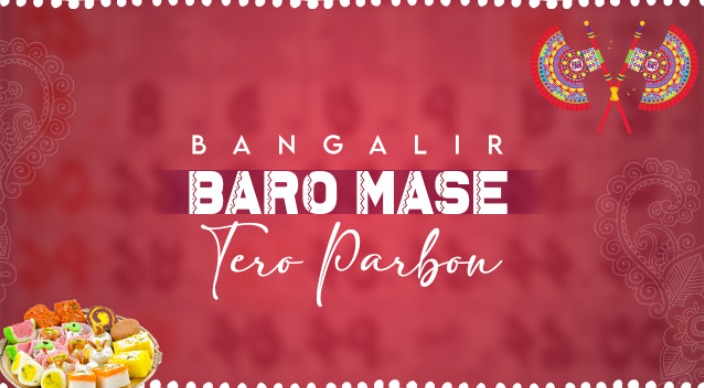Bengalis have a rich cultural heritage, and their love for festivals is deeply woven into their daily lives. The phrase “Baro Mase Tero Parbon” literally translates to “thirteen festivals in twelve months,” signifying the endless celebration that marks the Bengali calendar. These festivals are not just events but are tied to seasonal changes, religious traditions, and the spirit of togetherness.
Starting the year with Poush Parbon in January, marking the winter harvest, Bengalis celebrate by making pithe (traditional rice cakes). Next comes Saraswati Puja in February, where students and artists worship the goddess of wisdom and art, filling the day with vibrant celebrations and community gatherings.
Spring brings in Dol Jatra, the Bengali version of Holi, where colours and joy fill the air. As summer approaches, Poila Boishakh, the Bengali New Year, is celebrated with great enthusiasm. Families come together, wearing new clothes, enjoying festive feasts, and engaging in cultural activities.
Monsoon brings in Rath Yatra, a grand chariot festival celebrating Lord Jagannath, followed by the auspicious Janmashtami, celebrating Lord Krishna’s birth. Autumn ushers in the grandest festival, Durga Puja, where the state comes alive with devotion, art, and cultural extravaganza.
Post-Durga Puja, the festivities don’t end. There’s Lakshmi Puja, Kali Puja, and Bhai Phonta, Jagatdhatri puja, Kartik Puja all celebrating familial bonds and devotion. The year rounds off with Nabanna, another harvest festival, welcoming the winter.
Each festival represents a unique facet of Bengali life—community, food, rituals, and joy. With such diversity and abundance, it’s no wonder that Bengalis always find reasons to celebrate, truly embodying the spirit of “Baro Mase Tero Parbon.”
